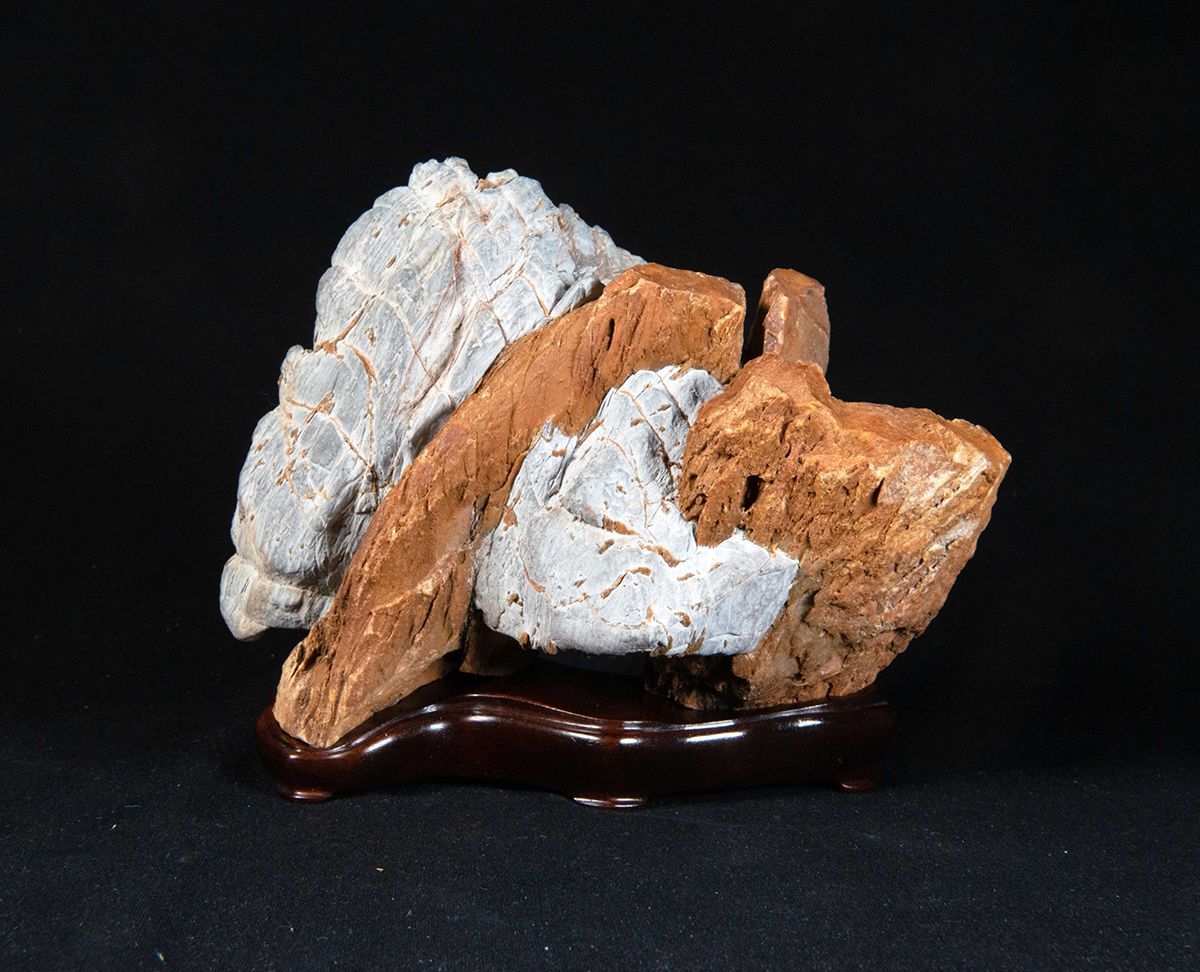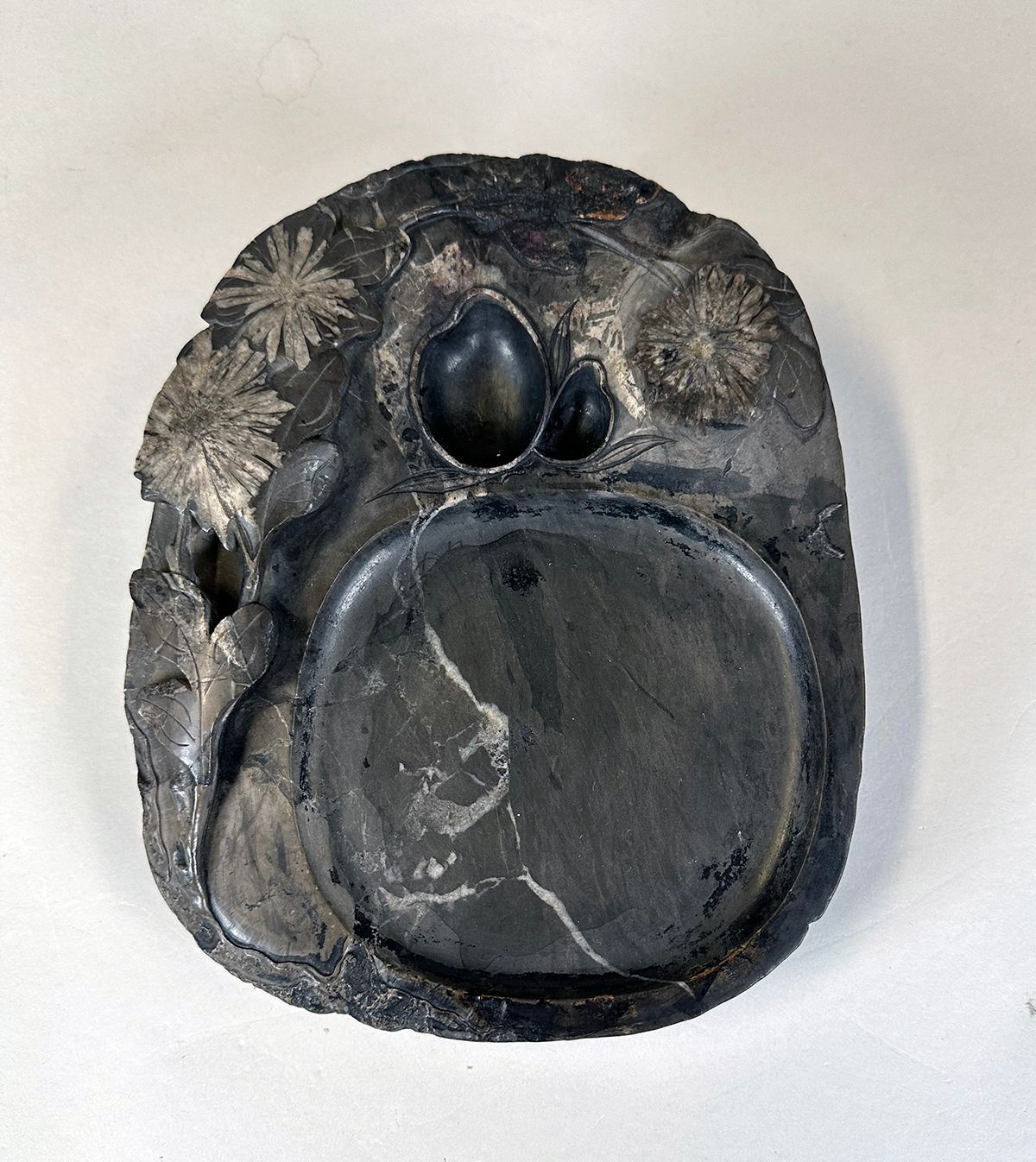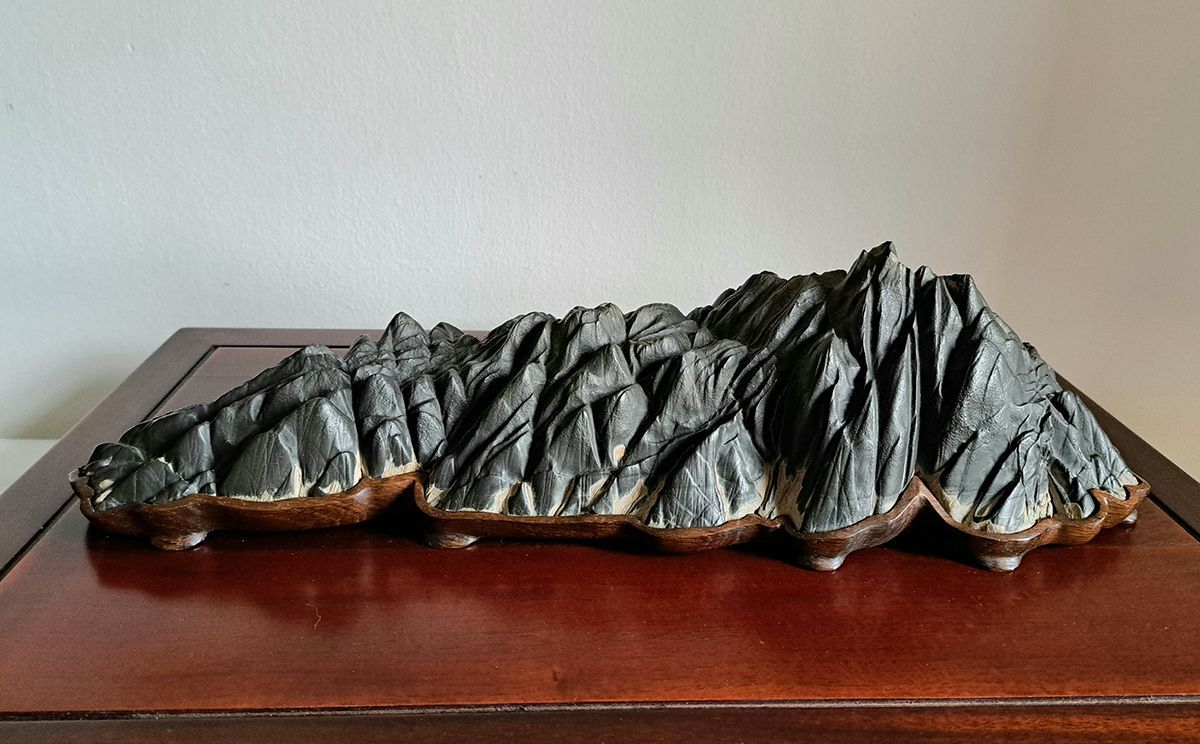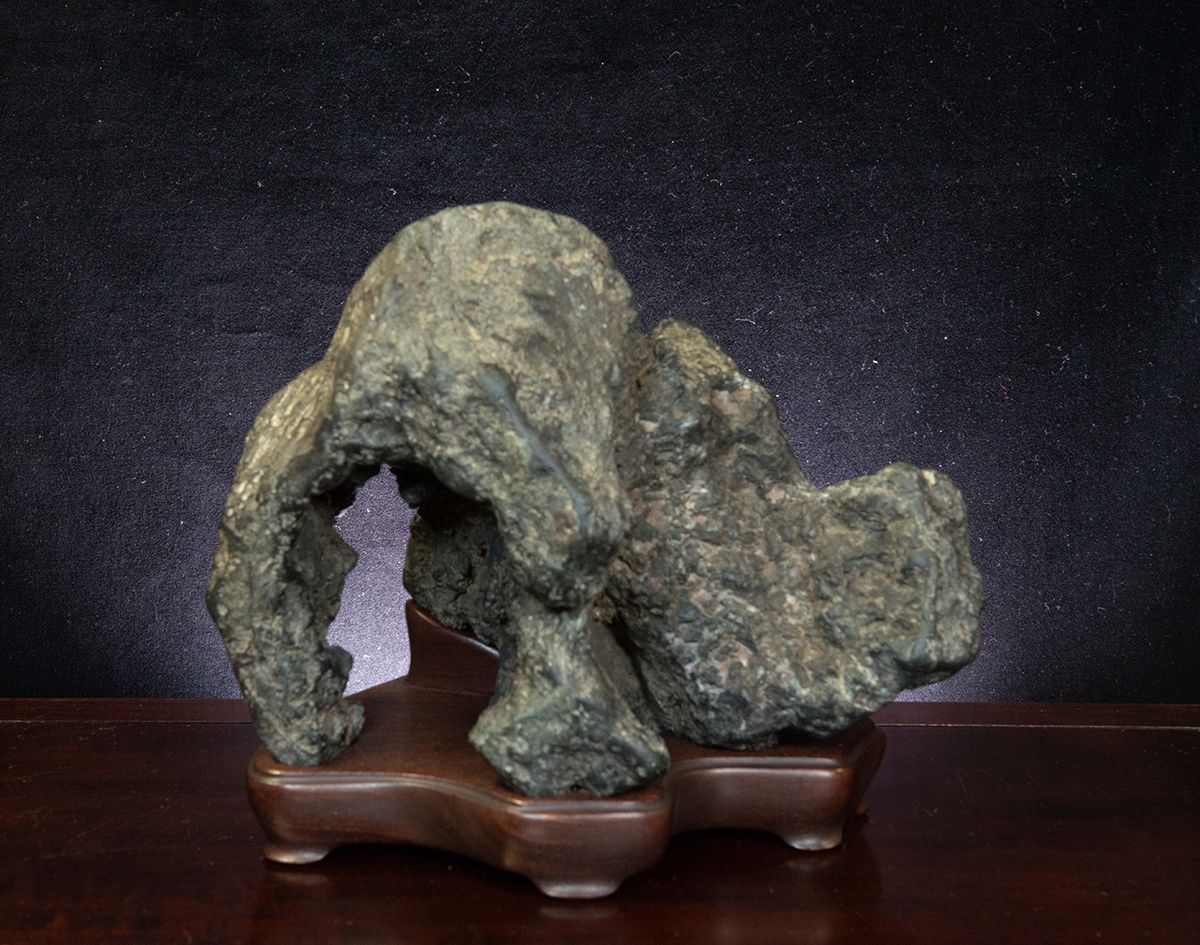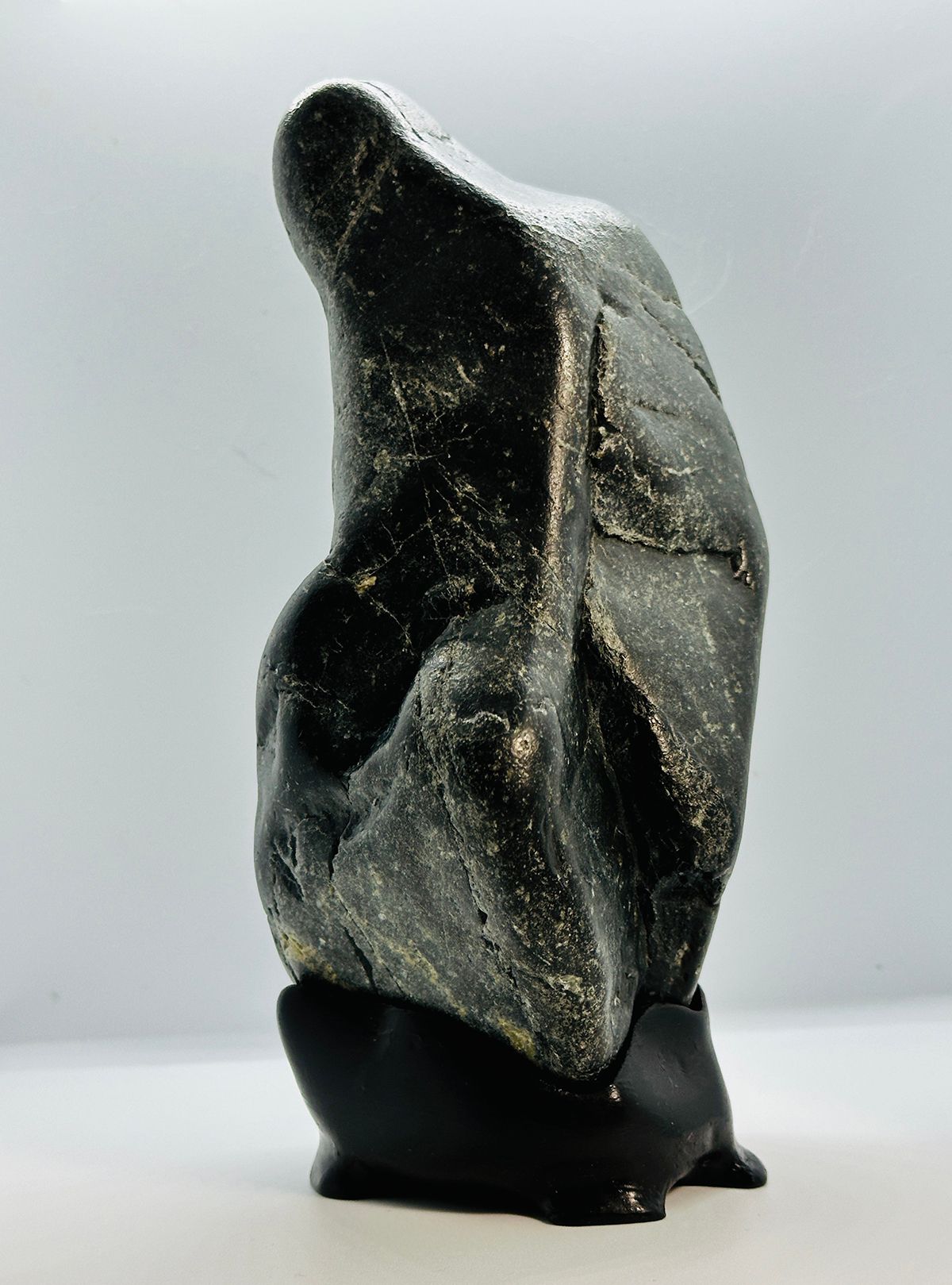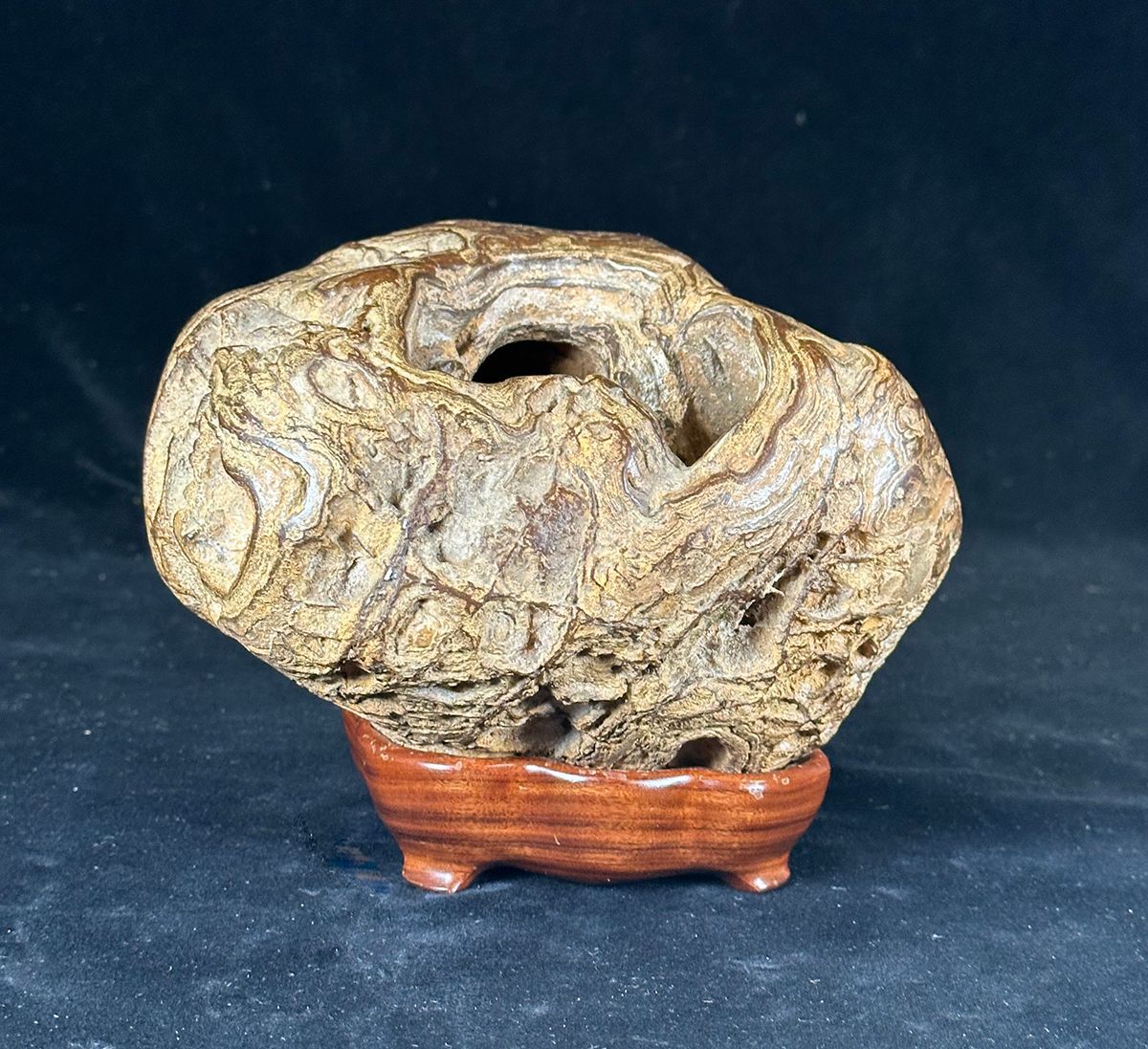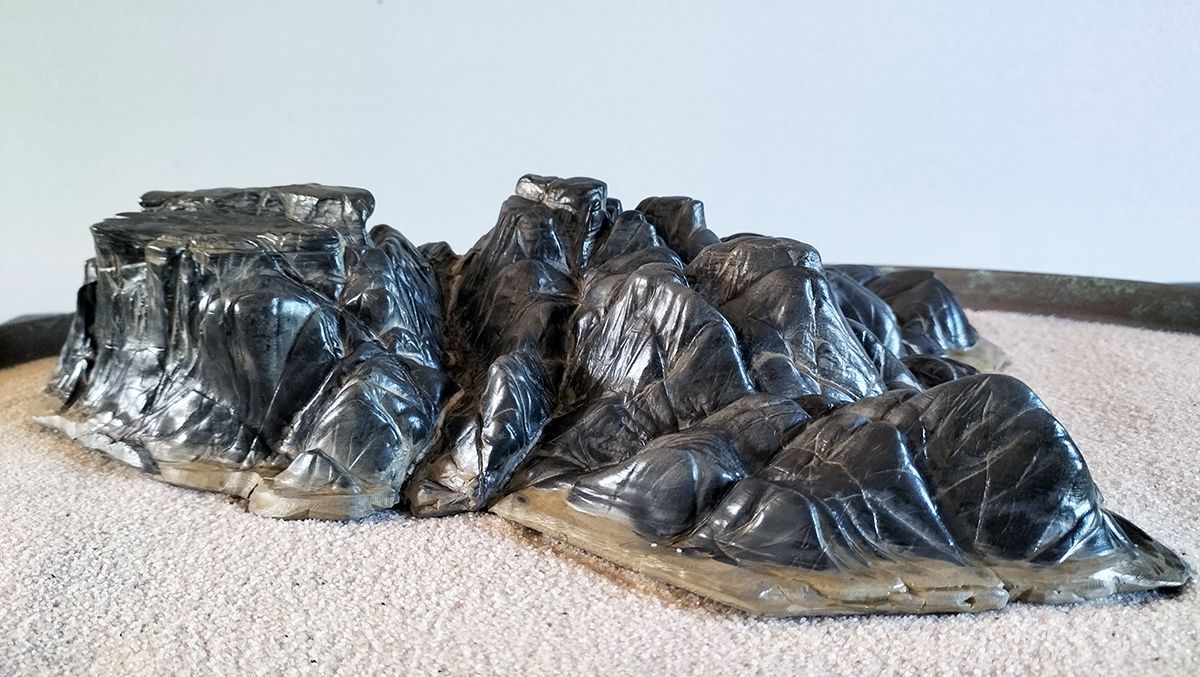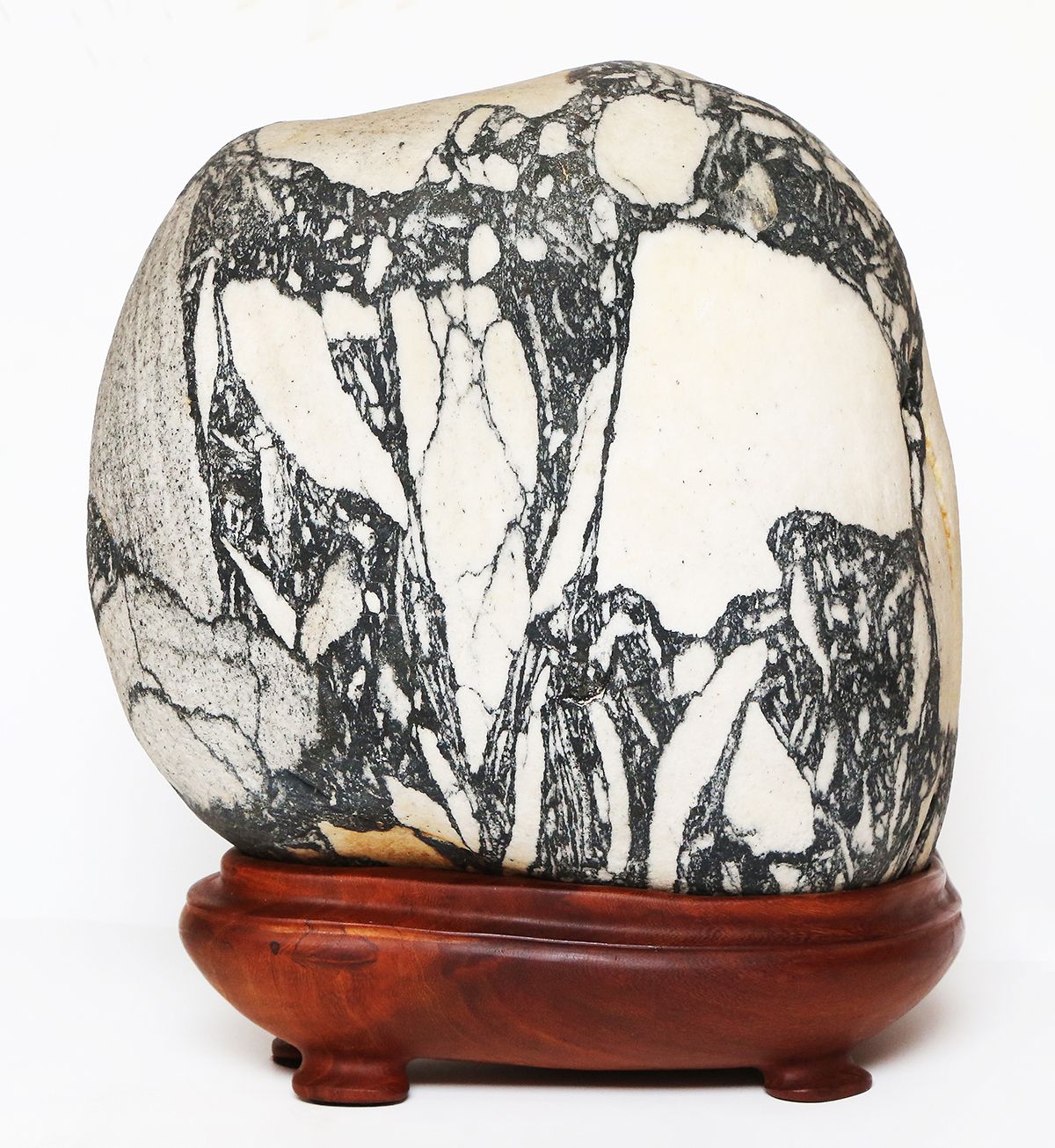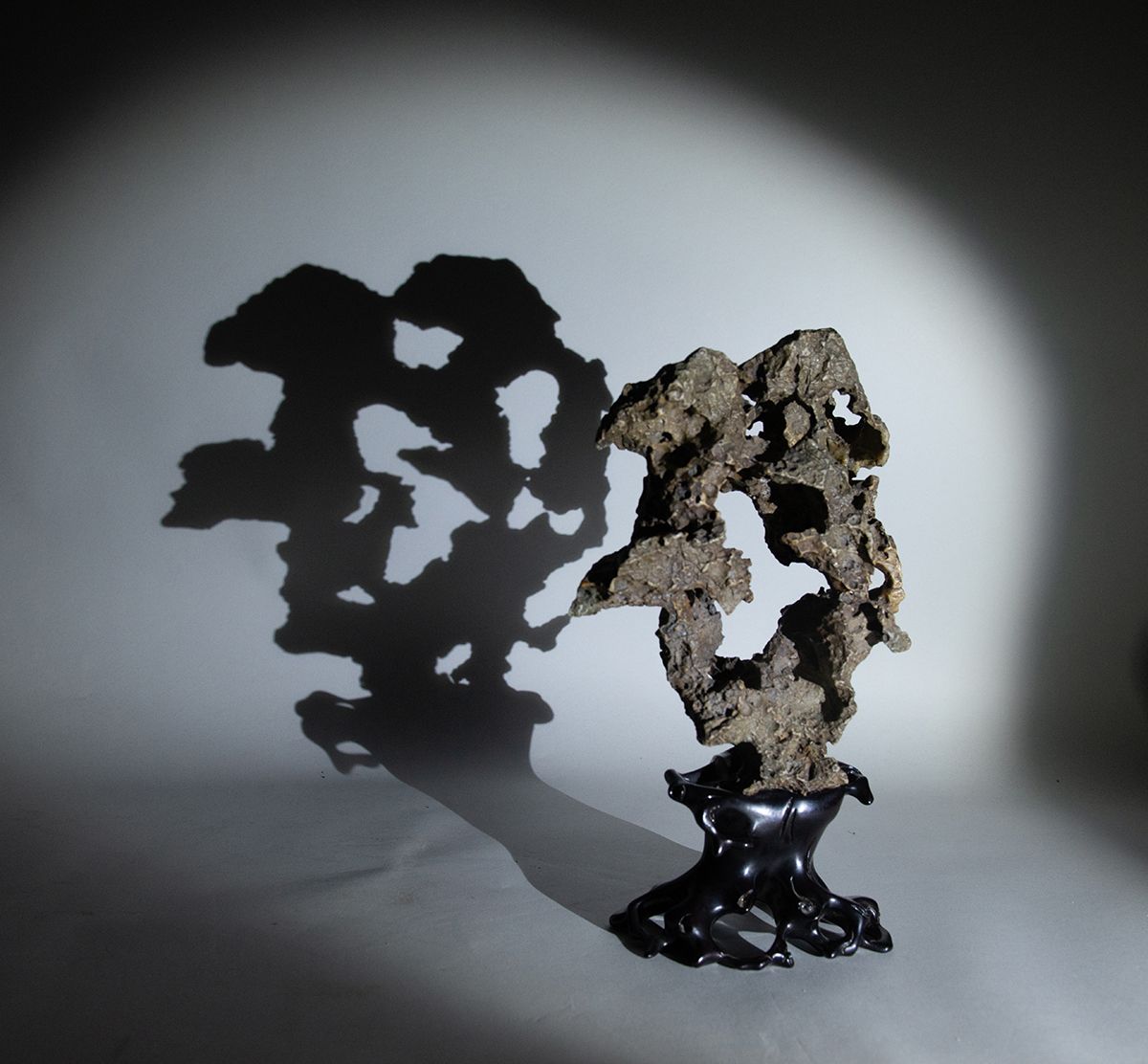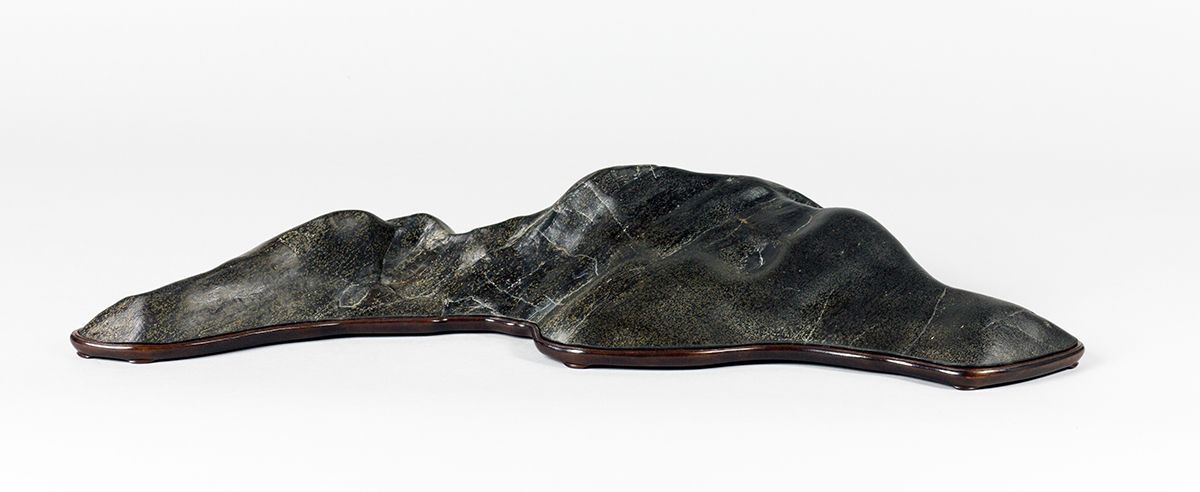
Stone of the Month:
December 2024
“Rare Shikoku Flowers”
By Thomas S. Elias
The rarest type of Japanese chrysanthemum flower stones originates on Shikoku Island. These colorful stones with a deep red matrix comprise less than 1% of these floral pattern stones known from Japan. The vast majority of the chrysanthemum flower stones were found high in the mountains in Neo Valley. In addition to being a rare type, this large Shikoku stone has a remarkable provenance that adds to its value and meaning.
This stone was brought to the US by Toy Sato, a southern California mineral and rock collector, in the mid-1970s. Mrs Sato specialized in minerals that formed flower-like formations. She made three trips to Japan to learn more about Japanese suiseki, especially about chrysanthemum flower stones. Mrs. Sato became friends with Dr. Shiraki who owned Round Mountain in Neo Valley, a primary source of chrysanthemum flower stones, and is credited with popularizing chrysanthemum flower stones in Japan. I believe that Mrs. Sato acquired many of her mum flower stones from Shiraki.
Sato was one of the organizers of the first major display of chrysanthemum flower stones in the USA. The “Los Angeles Meiseki Exhibition” was held from May 14 through August 30, 1973, at the Los Angeles County Natural History Museum. Thirty-eight chrysanthemum flower stones were displayed in this exhibit. This featured stone was likely acquired by Sato during her 1974 or 1977 trip to Japan. It remained in her personal collection for many years until she sold it to Ralph Johnson, a stone collector in Indian Wells California. Johnson was keenly interested in chrysanthemum flower stones, and eventually assembled a large collection of these stones.
Johnson encouraged Thomas Elias and Hiromi Nakaoji to puruse and complete their detailed study of these stones and publish the book Chrysanthemum Stones, The Story of Stone Flowers in 2010. He gifted several fine-quality chrysanthemum flower stones to Thomas Elias at this time including this Shikoku stone. A few years later, Mrs. Toy Sato came to our home to see our collection of flower stones. When she came to this stone, she shouted “That’s my stone.” She was happy to see it again and told us about her role in acquiring this stone.
Experiences like this make viewing stone collecting and appreciation deeply meaningful. Beautiful and geologically fascinating stones with documented provenance like this one are rare. They become a treasured part of the viewing stone history.
This stone measures 40 x 27 x 13 cm.

